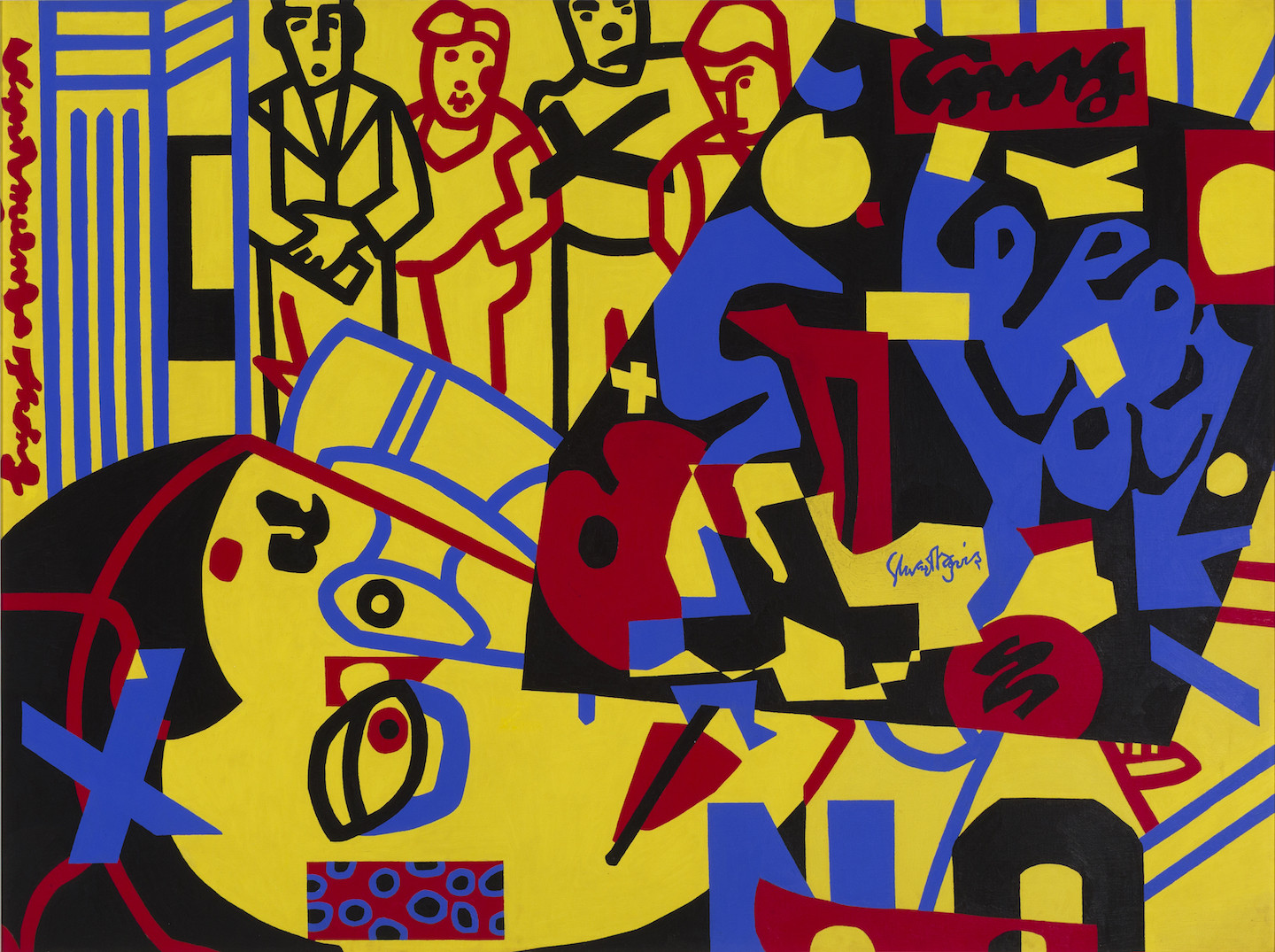
Leo Frobenius conceptualized cultural diffusion in 1897 in his publication Der westafrikanische Kulturkreis. He defined it as the transfer of cultural items from one culture to another. This term is now widely used to refer to the transfer cultural items between countries. Cultural diffusion is a critical issue in global affairs. Find out how to foster cultural diffusion in your area and around the globe. Here are some tips to help promote cultural diffusion.
Inter-cultural diffusion
All of us are exposed to a variety of cultures through travel or contact. But cultural diffusion extends far beyond the boundaries of particular regions. When two different cultures come together, they are often "intwined," which broadens the scope of a person's horizons and makes them more cosmopolitan. A Manhattan-based woman might buy malas prayer beads that are used by Buddhist monks. Although these beads are from a different culture, her meditation practice will be enhanced by the introduction to a new tradition. It would be impossible for her to attend the Brooklyn sushi night. It's a Manhattan tradition that has existed since ancient times.

Contagious diffusion
Contagious is one type of cultural diffusion. It occurs when a trend spreads quickly from one area to another. This type is best when the idea spreads by direct contact between people. This is the fastest and most popular way to spread an idea. The Latin word "contagious" means "to touch".
Stimulus diffusion
Cultural diffusion occurs when an idea or trend is introduced to a new location or cultural context. Cultural diffusion occurs when a cultural characteristic is introduced to a new location. It alters the way it is practiced there. The process of stimulus diffusion differs from cultural translation. In this case, a new idea/trait can only spread within a single culture. Instead, an idea can spread in many different cultural contexts, including multiple locations. Here are some examples.
Relocation diffusion
The spread of ideas and innovations is possible through both expansion and relocation diffusion. People often move with their culture and traditions when they move. Migration has been the main cause of cultural diffusion throughout history, resulting in the growth of cultures from many different places. It is also possible to force migration, as in the instance of mass immigration. Mass immigration has led to the development of new cultures from various ethnic groups, such as African and Caribbean peoples.
Barrier effects
Cultural items do not spread indefinitely. They are more likely to move away from their original locations, but they may encounter obstacles along the way. Barriers can both be physical or social. Deserts, mountains, dense forests, and other physical barriers are all examples of these types of barriers. The Amazon rain forest served as a physical barrier over centuries and was an example of this. Language and religion are social barriers. Although cultural diffusion is not an exact science, it is possible to understand how some barriers can affect the spread of culture.

Indirect diffusion
Direct and indirect cultural diffusion can occur simultaneously. Direct diffusion occurs when two cultures come together or fall in love. For example, when you visit a friend's country, you are likely to be exposed to their culture. Indirect diffusion occurs when you are forced to adopt certain cultural characteristics. This happened in Barcelona at the beginning of the 20th century. It is not uncommon for people to adopt aspects of another culture without realizing it. But the difference is profound.
FAQ
What is some pop culture from 2020?
The music industry is changing quickly. This year saw artists like Travis Scott, Post Malone, Billie Eilish and Billie Eilish reach number one on Billboard’s Hot 100 Chart. This was a remarkable achievement for any artist.
The same holds true for streaming services. Spotify reported that it streamed more than 10 billion hours worth of audio content last fiscal year. That's around 5 times what users were listening to just five years ago!
This has resulted a huge shift in the ways people consume media. Nowadays, most people are more interested in consuming content than creating.
Today everyone from toddlers to retirees has access to a device capable of playing back high-quality audio content. This allows anyone to record, edit and mix their music.
It's no longer necessary to go to university and study classical instrumentation to be able to play your favorite song. It's easy to download an app and add your voice. Then upload the videos to YouTube.
If you don't feel like making music, why not just watch? You will find many channels dedicated to creating videos of songs from covers to parodies.
What is popular music culture?
Popular Music Culture is a constantly-changing phenomenon that comes in many forms.
The use of certain music styles (e.g. jazz, rock) and lyrics is what defines popular music culture. It also covers the influence of visual media like film, television, fashion advertising, and so on, on artists' careers as well as public perception.
It's also the way that fans interact with their favorite musicians.
One aspect of popular music culture is the rise of "superstars," artists who have achieved fame, fortune, and status for themselves.
These superstars often transcend genres and become cultural icons, and their popularity has influenced the evolution of popular music itself.
Some other elements of popular music culture are:
* The rise and development of recording technology, from acoustic instruments through to electric guitars or microphones.
* The invention of the record player and the radio;
* The dawn of rock 'n' roll;
* The introduction of television and film
* The introduction of MTV and VH1
* The creation or the Internet.
What examples are there of pop culture?
Pop Culture refers to the art form of 21st century. Pop Culture includes all forms of popular entertainment such as music, film, TV and video games, fashion, advertising and comics. Neil Postman, an author, coined the term "pop" in his 1985 book Amusing Ourselves. Pop is a form of mass communication that employs cheap tricks and formulaic tools to create the illusion of spontaneity or uniqueness.
He noted, however, that many people do not feel true enjoyment due to their conditioned desire to find media experiences that make others feel superior. In addition, he argued that this type of cultural expression had contributed to the loss of critical thinking skills among young adults.
Pop culture can also refer to popular culture and consumerism.
How can we avoid the dangers of pop culture?
We should first be able to identify when pop culture has an influence on us. It is important to recognize when pop culture influences us. Then, it is crucial that we do not allow ourselves to be influenced. Here are ways to help you stay away from bad influences:
-
Avoid violent shows such as Game of Thrones.
-
Do not spend too much time on the Internet. Instead, read books.
-
Reduce your television viewing. Spend your free time doing healthy activities.
-
Take care what you post online. After comments have been posted, they can't be deleted.
-
You should ensure that all websites you visit are secure. Before you provide personal information, be sure to check them.
-
Don't allow anyone to pressure you into dangerous actions.
If you see yourself becoming addicted to pop culture, talk to an adult who will help you. You can either call your local library (800-THELOOST), or the National Center For Missing & Evacuated Children (1-808-THELOOST).
What is pop media culture?
Pop culture is all around us. Pop culture is everywhere. It is all around us 24/7. It influences everything from our clothes, food, music, language, politics, and religion. What is pop culture exactly? Wikipedia states that pop culture refers to products and ideas designed for mass consumption. Most people believe that pop culture refers to movies, television, music, fashion, or other entertainment. Pop culture does not only include entertainment. The term covers everything consumed by the masses. It includes video games, sports and toys, fast food, political campaigns, and many more.
What can pop culture teach you?
Our society today values material things over everything else. This is especially true with young people. They spend hours every day looking at screens. They spend hours looking at screens, playing video games, and surfing the internet. All of these distract them from the task at hand, which is to complete school work. This leads to them failing classes.
Everyone wants to fit in. That means being popular. Popularity is dependent upon having money, clothes and other possessions. This can lead to some people doing things that aren’t right.
We have become dependent on technology. We now have access to all types of information thanks to technology. Not everything is accurate. False rumors can be found all over the Internet. These rumors spread fast because people share them on social networking sites. It is easy to share something without verifying its truth.
People have lost their ability for critical thinking. They believe what they see online. They trust what they hear on television and in magazines. They stop thinking for themselves. Instead, they follow the crowd.
We lose control when we rely on other people to tell us what's up. Pop culture teaches you to depend on others. It can also lead to lazy people. Although the truth is out there and we often don't find it, it can make us lazy.
What is the origin of pop music?
It was an accident. The accident that someone accidentally knocked down a piano in 1920 caused the first song's creation.
The recording company liked the song and decided to release it single.
This was the first ever single to become a hit.
Pop music is today the most popular form musical entertainment.
Statistics
- Less than a decade later, that statistic rose to 90% (Dager, n.d.). (socialsci.libretexts.org)
- Latinos represent roughly 19% of the U.S. population. (npr.org)
- For example, the term hater meaning someone who strongly undermines or criticizes others, often due to pathetic jealousy, likely emerged from hip hop culture, such as the term playa hateras, used by influential rapper Biggie Smalls as early as 1995. (simplicable.com)
- In 1987, US films captured 56% of the European film market. (socialsci.libretexts.org)
- [17][18][19]Definition[edit]According to author John Storey, there are various definitions of popular culture. (en.wikipedia.org)
External Links
How To
Which companies have used pop culture in their marketing strategies?
Many companies have used popular culture to market their products and services in recent years. Here's a selection:
-
McDonald's - The McDonald's Superbowl campaign 2014 saw clips from movies like 'The Big Short', 'Inside Out'. A commercial called "I'm loving it" was also available. It featured images of people eating and dancing to Drake's songs.
-
Nike – In 2013, Nike launched a commercial featuring Kevin Durant (basketball player). He said he was inspired after watching the movie "Space Jam" and decided to try out his own version of Michael Jordan's shoes.
-
Coca-Cola - During the summer of 2015, Coca-Cola released a series of ads called "America's Choice Awards." These awards were based upon categories like Best Movie or Best TV Show. Each category was advertised for 30 seconds at a fictional awards ceremony.
-
Google - Google declared in November 2015 that the company would sponsor the Super Bowl. This was the first sponsorship since 2010. This included launching a website called google.com/superbowl, allowing users to watch highlights from previous games. Google would show the votes of users alongside the scores for each team.